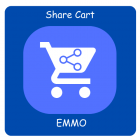Complete Guide to Cross-Channel Marketing Attribution: Connecting Digital Campaigns to In-Store Sales

Complete Guide to Cross-Channel Marketing Attribution: Connecting Digital Campaigns to In-Store Sales
In today's omnichannel landscape, consumers engage with brands across multiple touchpoints—ranging from digital ads and social media to in-store visits. Understanding how each interaction contributes to a final sale is crucial for optimizing marketing strategies and budgets. Cross-channel marketing attribution provides the framework to analyze these interactions, bridging the gap between online campaigns and offline sales.
Table Of Content
- Why Cross-Channel Attribution Drives Marketing ROI in 2025
- The Attribution Gap That's Costing You Money — 2025 Edition
- Step 1: Deploy Smart In-Store Tracking Technology
- Step 2: Drive Mobile App Adoption in Physical Stores (2025 Update)
- Step 3: Build Your Unified Data Infrastructure
- Step 4: Implement Advanced Attribution Models
- Overcoming Implementation Challenges in Cross-Channel Attribution
- Summary
- FAQs
Why Cross-Channel Attribution Drives Marketing ROI in 2025
As digital marketing spend continues its rapid growth, global investment in digital advertising is projected to surpass $830 billion in 2025. Despite this vast outlay, many businesses still struggle to accurately connect their marketing efforts across channels to actual customer purchases. Recent studies show that approximately 70% of retailers cannot fully link online campaigns to in-store sales, perpetuating a costly attribution gap that leads to millions lost in wasted ad budgets and missed optimization opportunities.
The Complex Customer Journey in 2025
The modern customer journey is more fragmented and dynamic than ever. Consumers engage with brands across multiple digital and offline touchpoints, including:
- Social media ads and influencer campaigns
- Paid search and video advertisements
- Email marketing and push notifications
- Mobile app interactions and SMS
- In-store visits and physical events
Without a robust cross-channel attribution framework, marketers operate with an incomplete picture, making it difficult to identify which touchpoints truly drive conversions and revenue.
What Is Cross-Channel Attribution?
Cross-channel attribution is the analytical practice of assigning credit to all marketing touchpoints—both online and offline—that influence a customer’s decision to convert. It moves beyond last-click or single-channel tracking to provide a 360-degree view of marketing effectiveness.
- Measure the incremental impact of each channel
- Understand interaction sequences across platforms
- Optimize campaign spend based on comprehensive data
Why Cross-Channel Attribution Is Critical to Maximizing ROI
- Smarter Budget Allocation: By knowing which channels contribute most, marketers can shift budgets dynamically to maximize returns.
- Lower Waste: Cross-channel attribution uncovers underperforming campaigns, reducing ad spend wasted on ineffective strategies.
- Enhanced Customer Experience: Deliver more personalized, timely messaging by understanding the customer journey in depth.
- Higher Revenue: Identifying the right mix of touchpoints increases conversion rates and overall sales effectiveness.
The Financial Impact of Poor Attribution in 2025
- Businesses potentially lose 20-35% of their marketing budgets due to inaccurate attribution.
- Indirect conversion channels like email nurturing or retargeting campaigns often get undervalued, missing out on credit for driving final sales.
- Without offline integration, marketers overlook a significant portion of sales driven by in-store promotions or direct outreach.
Latest Cross-Channel Attribution Trends and Statistics (2025)
| Aspect | Key Data / Insight |
|---|---|
| Global Digital Ad Spend (2025) | Expected to exceed $830 billion, with strong growth in AI-driven personalization and immersive video ads. |
| Adoption of Multi-Touch Attribution | More than 60% of marketers have adopted multi-touch or data-driven models, a 10% increase from 2024. |
| Integration of Offline Data | Nearly 50% of brands now integrate POS and CRM data with digital analytics to close the attribution loop. |
| Role of AI & Machine Learning | 70% of companies plan to invest in AI-powered attribution platforms to manage complex, multi-channel data automatically. |
| Impact of Data Privacy Regulations | Privacy laws like GDPR, CCPA, and the evolving ePrivacy Directive affect 40% of businesses’ ability to track users end-to-end. |
| Rise of Privacy-First Attribution | Growing demand for privacy-compliant models (like aggregated data and probabilistic attribution) is reshaping attribution strategies. |
How to Effectively Implement Cross-Channel Attribution in 2025
- Centralize Customer Data: Adopt Customer Data Platforms (CDPs) or unified marketing clouds that consolidate data across all channels and devices.
- Shift to Advanced Attribution Models: Use data-driven or algorithmic attribution methods to capture the nuanced impact of each touchpoint.
- Seamlessly Merge Offline and Online Data: Ensure your attribution strategy integrates CRM, point-of-sale (POS), call center, and offline event data.
- Embrace Privacy-First Strategies: Implement consent management platforms and privacy-compliant tracking technologies to maintain data integrity.
- Leverage AI & Automation: Utilize AI to uncover hidden patterns in customer behavior and automate budget reallocation for maximum ROI.
The Attribution Gap That's Costing You Money — 2025 Edition
Marketing attribution—the ability to accurately identify which marketing channels drive actual sales—is now more crucial than ever. In 2025, the marketing landscape is increasingly complex with omnichannel customer journeys, privacy-first regulations, and evolving technology. While e-commerce stores have sophisticated tracking tools (pixels, cookies, server-side tagging), physical retailers continue to struggle to connect digital marketing efforts to in-store sales.
The Customer Journey Puzzle in 2025
Consider this modern buyer journey:
- Monday: Views your Instagram Reels ad
- Tuesday: Saves your product on Pinterest
- Wednesday: Searches your brand via voice assistant
- Thursday: Visits your website on mobile
- Friday: Purchases in-store after scanning a QR code
Which touchpoint gets credit for the sale? The answer is less straightforward than ever.
What Happens Without Accurate Attribution?
Businesses without proper attribution in 2025 face these risks:
- Overspending on ineffective or low-impact channels amid rising ad costs (average digital CPMs have increased by 15% year-over-year).
- Missing out on scaling proven campaigns due to unclear ROI data.
- Losing a comprehensive view of increasingly fragmented customer journeys that cross devices, platforms, and offline channels.
- Making misguided marketing decisions based on partial or siloed data, leading to revenue losses.
The 2025 Attribution Reality Check
| Metric | Statistic | Source Year |
|---|---|---|
| Retailers with unified online and offline data | 34% | 2025 |
| Retailers actively using unified data for marketing optimization | 4.5% | 2025 |
| Sales uplift reported after implementing multi-touch attribution | Up to 35% | 2024 |
| Average marketing ROI increase from AI-driven attribution models | 25-30% | 2025 |
| Percentage of consumers engaging via omnichannel journeys | 78% | 2025 |
Why Is Closing the Gap Still Difficult?
- Data Silos Persist: Despite advances, many retailers struggle to integrate POS, CRM, loyalty, and digital marketing data in real time.
- Privacy-First Era: With global regulations like GDPR, CCPA, and new laws (e.g., CPRA in the US, PIPL in China), marketers must balance data-driven insights with consumer privacy.
- Rise of Cookieless Tracking: Major browsers and platforms have deprecated third-party cookies, forcing marketers to adapt to first-party data and privacy-safe tracking methods.
- Complex, Nonlinear Journeys: Customers interact across social, search, email, voice, mobile apps, and physical locations in ways that defy simple attribution models.
The Latest Solutions to Bridge the Attribution Gap in 2025
- Unified Customer Data Platforms (CDPs): Integrate all data sources—web, app, in-store transactions, loyalty, CRM—into a single, privacy-compliant profile.
- AI-Powered Multi-Touch Attribution: Algorithms analyze complex customer paths to assign credit accurately, adapting dynamically to new data.
- Privacy-Centric Identity Resolution: Using hashed emails, phone numbers, and device graphs, brands connect online activity to offline purchases without breaching privacy.
- Server-Side Tracking and First-Party Data Collection: To overcome browser restrictions, companies shift tracking to their own servers and focus on direct customer relationships.
- Advanced Incrementality Testing: Controlled experiments measure the true incremental impact of campaigns on offline sales, isolating marketing effects from external factors.
- Digital-Physical Linkages: QR codes, NFC tags, mobile wallet offers, and app-based check-ins create traceable touchpoints at physical stores.
- Real-Time Analytics Dashboards: Provide marketers instant visibility across channels for faster, data-driven decisions.
Why Retailers Can’t Afford to Ignore Attribution in 2025
The modern customer expects seamless, consistent experiences across all touchpoints. Retailers who fail to integrate online and offline attribution risk:
- Wasting up to 30% of their marketing budgets on ineffective campaigns according to recent industry estimates.
- Degrading customer loyalty through disjointed messaging and offers.
- Lagging behind competitors leveraging AI and data unification for growth.
Actionable Steps for Retailers in 2025
- Conduct a data maturity assessment to identify gaps in unifying online and offline sales data.
- Adopt a Customer Data Platform (CDP) that supports privacy-compliant identity resolution.
- Shift to AI-driven multi-touch attribution models that reflect complex omnichannel journeys.
- Implement privacy-safe tracking technologies including server-side tagging and first-party data capture.
- Use incrementality testing to validate campaign effectiveness and adjust budgets dynamically.
- Leverage digital-physical connectors like QR codes and mobile wallets to link in-store actions with online marketing.
- Train marketing and analytics teams on new attribution models and privacy compliance.
Bridging the attribution gap in 2025 means transforming marketing from guesswork into precision science — unlocking deeper insights, cutting waste, and growing sales profitably.
Step 1: Deploy Smart In-Store Tracking Technology
Goal: Bridge the Gap Between Digital Ads and Physical Store Performance
In today’s omnichannel retail landscape, connecting your online advertising efforts with actual in-store customer behavior and sales is essential. Advanced in-store tracking technologies provide retailers with real-time, actionable insights such as foot traffic, dwell time, purchase behavior, and customer movement patterns. These data streams fuel powerful machine learning algorithms that optimize marketing spend, improve customer experiences, and drive sales growth.
Why Smart In-Store Tracking Matters
- Improved Attribution: Understand exactly how digital campaigns influence in-store visits and purchases.
- Personalized Marketing: Tailor promotions and experiences based on customer behavior.
- Operational Efficiency: Optimize staff allocation, store layouts, and inventory management.
- Customer Insights: Gain demographic and behavioral data to refine product offerings and marketing.
Location-Based Tracking Technologies: Features, Accuracy, and Applications
| Technology | Accuracy | Cost Level | Best Use Case |
|---|---|---|---|
| Bluetooth Beacons | 3-5 meters | Low | Basic foot traffic monitoring, app-based engagement |
| Ultra-Wideband (UWB) | <30 cm | High | Precise indoor navigation, premium retail environments |
| Wi-Fi Analytics | 5-15 meters | Medium | Traffic patterns, repeat visits, demographic data |
| Computer Vision | Variable (cm to m) | High | Behavior analysis, queue management, demographic profiling |
| RFID / IoT Sensors | Product-level | Medium | Inventory tracking, customer-product interaction |
Choosing Your Tech Stack: Align with Your Goals and Budget
Start by defining your primary business objectives: Are you focused on foot traffic analysis, detailed customer behavior, or product-level interactions? Consider your budget and technical readiness.
Common deployment scenarios:
Start by identifying the exact nature of your project:
- Basic Setup:
- Advanced Setup:
- Premium Setup:
Use Wi-Fi Analytics combined with your mobile app integration to track visitor flow and repeat visits at a moderate cost. This setup fits well for retailers new to in-store tracking.
Add Bluetooth Beacons for proximity marketing and improved engagement, along with Computer Vision systems to analyze customer behavior and optimize store layout.
Combine Ultra-Wideband (UWB) for sub-meter precision with AI-powered cameras and IoT sensors to capture detailed customer paths, dwell time, and product interactions. Ideal for large stores or luxury brands seeking deep insights.
Best Practices for Implementation
- Data Privacy Compliance: Ensure tracking methods comply with GDPR, CCPA, and other regulations; provide transparent customer opt-in options.
- Integrate Online and Offline Data: Link in-store data with your CRM and digital ad platforms for full attribution and retargeting.
- Focus on Actionable Metrics: Collect data that directly impacts marketing decisions — avoid overwhelming your system with unnecessary info.
- Pilot and Scale: Start with a small store or section, analyze the impact, then scale gradually.
Latest Trends & Innovations (2025 Update)
- AI-Driven Analytics: Next-gen machine learning models predict customer purchase intent by combining in-store behavior with online activity.
- Edge Computing: Processing data locally on IoT devices reduces latency and improves real-time decision making.
- 5G Connectivity: Enhances the reliability and speed of wireless tracking technologies, supporting richer video analytics.
- Privacy-Enhancing Tech: Techniques like differential privacy enable behavioral insights without compromising individual anonymity.
- Augmented Reality (AR) Integration: Combining AR apps with beacon technology for immersive in-store experiences linked to digital marketing.
Summary Table of In-Store Tracking Technologies
| Technology | Accuracy | Cost Level | Typical Deployment |
|---|---|---|---|
| Bluetooth Beacons | 3-5 meters | Low | Small-to-medium stores |
| Ultra-Wideband (UWB) | <30 cm | High | Premium retailers |
| Wi-Fi Analytics | 5-15 meters | Medium | Broad retail chains |
| Computer Vision | Variable | High | Large stores, malls |
| RFID / IoT Sensors | Product-level | Medium | Inventory-heavy retailers |
Tip
To enhance your eCommerce store’s performance with Magento, focus on optimizing site speed by utilizing Emmo themes and extensions. These tools are designed for efficiency, ensuring your website loads quickly and provides a smooth user experience. Start leveraging Emmo's powerful solutions today to boost customer satisfaction and drive sales!
Step 2: Drive Mobile App Adoption in Physical Stores (2025 Update)
|Goal:
Create a seamless and consistent data collection framework by connecting digital engagement to offline behavior. Mobile apps bridge the gap between in-store purchases and online behavior, giving retailers a full view of customer journeys.
Why Mobile Apps Are Critical for Omnichannel Success
Mobile apps offer a direct, always-on connection to your customer base. Unlike websites, apps can gather contextual data—like location, device behavior, time spent in-store, product interactions, and engagement frequency. This real-time insight enables hyper-personalization, which in turn drives revenue and loyalty.
- 90% of shoppers use their smartphones while in-store.
- 78% of consumers are more likely to purchase from a brand offering personalized in-store experiences.
- Apps account for 3x more engagement compared to mobile web platforms.
Proven App Engagement Strategies for In-Store Use
1. Location-Based Incentives
- Use geofencing or beacon technology to trigger personalized push notifications when customers enter the store.
- Examples: “Welcome back! Here’s 15% off your favorite snack” or “Scan this QR code for a hidden deal.”
- Impact: Push notifications with geolocation relevance can increase open rates by 340% and double conversion rates.
2. Loyalty Program Integration
- Offer exclusive in-app perks for scanning products, checking prices, or completing mini-tasks.
- Reward points for in-store app actions: e.g., “Get 20 bonus points for scanning any three items today.”
- Drives recurring behavior while enriching first-party data profiles.
3. Utility and Convenience Features
- Embed tools like:
- Store maps
- Digital shopping lists
- Click-and-collect updates
- Real-time stock checkers
- Apps that simplify and enhance the in-store experience see 40% higher retention over six months.
4. Gamification Elements
- Create interactive and rewarding experiences:
- "Find the hidden item" scavenger hunts
- Department visit trackers
- Department visit trackers
- Time-bound reward challenges
- Gamified interactions increase time spent on the app and build emotional brand connection.
5. Seamless Offline-Online Attribution
- Enable NFC or barcode scanning within the app to track offline behaviors.
- Sync in-app search behavior with physical aisle placements to understand product discovery paths.
- Analyze: “Did the customer see this product in an ad, save it in their list, then buy it in-store?”
Mobile App Features Comparison Table
| Feature | Purpose | Impact on Engagement | Data Collected |
|---|---|---|---|
| Location-Based Offers | Personalize real-time experiences | +340% push open rate | Location, visit frequency |
| Loyalty Tasks & Points | Increase repeat usage | +80% app reopens/week | Action tracking, preferences |
| Digital Convenience Tools | Improve shopping efficiency | +40% app retention (6 months) | Search intent, product interest |
| Gamified Shopping Challenges | Enhance interactivity | +60% session duration | In-store pathing, category interest |
| QR/NFC Product Interactions | Link physical items to digital insights | +55% conversion on scanned items | SKU-level behavior |
Step 3: Build Your Unified Data Infrastructure
Goal
Unify data from your POS, e-commerce, marketing platforms, mobile apps, and in-store systems into a centralized infrastructure to enable full-funnel marketing attribution, personalization, and real-time analytics.
Why It Matters
Fragmented data leads to inaccurate attribution, ineffective targeting, and lost revenue opportunities. Legacy systems, inconsistent data formats, and siloed departments create gaps that obstruct your view of the customer journey.
Core Data Infrastructure Components
1. Cloud Data Warehouses (CDWs)
Modern data warehouses act as the foundation of unified analytics systems.
- Handle high-volume, high-velocity structured/unstructured data
- Real-time or near real-time analytics & machine learning ready
- Auto-scale storage and compute as data grows
- Integrate with marketing stacks, BI tools, and APIs
2. Customer Data Platforms (CDPs)s
Purpose-built to unify customer identity and behavior across channels.
- Build dynamic, consent-compliant customer profiles
- Enable real-time segmentation and predictive audiences
- Automate syncing with CRM, email, ads, and analytics tools
- Manage consent, GDPR/CCPA compliance at scale
3. Analytics & BI Tools
Surface actionable insights and democratize data usage.
- Visualize multi-touch attribution and user journeys
- Run forecasting, churn prediction, LTV modeling
- Automate reporting for multiple departments
- Enable self-serve dashboards for marketing, sales, and product
Unified Data Infrastructure Comparison Table
| Platform Type | Key Purpose | Real-Time Support | Best Use Cases |
|---|---|---|---|
| Cloud Data Warehouse | Central data storage & processing | Yes (varies) | Aggregating data from all sources |
| Customer Data Platform | Customer profile unification & activation | Yes | Segmentation, personalization, retargeting | >
| Analytics & BI Tools | Data exploration, visualization, and reporting | Yes (some) | Attribution, insights, forecasting |
Implementation Strategy
- Phase 1: Integrate Core Systems
- Phase 2: Add Marketing Channels
- Phase 3: Extend to Offline & Mobile
- Phase 4: Activate Advanced Analytics
Start with foundational sources — POS, website analytics, email marketing, and e-commerce platform data. Clean and normalize the data for consistency.
Incorporate search engine data (Google Ads, Bing), social media platforms (Meta, TikTok, LinkedIn), and programmatic display ad data. Tag consistently for UTM tracking.
Integrate in-store traffic data via beacons or Wi-Fi analytics, plus mobile app interactions via SDKs to close the online/offline loop.
Deploy predictive modeling, machine learning, and real-time personalization. Build custom attribution models, forecast sales, and personalize customer journeys with AI.
Ongoing Optimization
- Set regular data audits and validation checkpoints
- Involve cross-functional teams (marketing, IT, ops)
- Continue adding new data sources (loyalty, customer support, third-party data)
- Align KPIs across all departments
Step 4: Implement Advanced Attribution Models
Why This Matters
Traditional attribution models like “last-click” significantly oversimplify the customer journey. Today’s consumers interact with brands across multiple channels—search, social, email, paid ads, and offline touchpoints—before making a purchase. Relying on a single touchpoint ignores the contribution of earlier interactions that influenced the decision.
Advanced attribution models empower marketers to:
- Optimize budget allocation with data-backed decisions
- Identify underperforming or overperforming channels
- Forecast ROI with higher accuracy
- Tailor strategies to customer behavior
Attribution Model Comparison
| Model Type | Accuracy | Complexity | Best For |
|---|---|---|---|
| Last-Click | Low | Simple | Basic reporting and immediate conversions |
| First-Click | Low | Simple | Measuring brand awareness impact |
| Linear | Medium | Medium | Equal touchpoint contribution |
| Time-Decay | Medium | Medium | Emphasizing recent interactions |
| Data-Driven | High | Complex | Full-funnel insights based on behavior |
| Machine Learning | Highest | Complex | Predictive modeling and optimization |
Key Attribution Technologies
1. Multi-Touch Attribution (MTA) Platforms
These tools assess every interaction across the customer journey and assign fractional credit to touchpoints like paid ads, organic search, referral links, and email campaigns.
Benefits:
- Channel synergy measurement
- Real-time conversion tracking
- Custom weighting models
Popular Use Cases:
- Omnichannel eCommerce
- Subscription services
- Lead generation funnels
2. Marketing Mix Modeling (MMM)
MMM uses regression-based statistical models to estimate the incremental impact of marketing channels—both online and offline—on sales and conversions.
Benefits:
- Includes offline media (TV, radio, print)
- Captures external factors (seasonality, competition)
- Helps forecast budget effectiveness
Best For:
- Large-scale brand campaigns
- Retailers with significant offline media spend
Emerging Trends in Attribution (2025 Update)
- AI-Powered Attribution: AI algorithms now adapt to real-time customer behavior shifts, automatically adjusting model weightings.
- Privacy-First Attribution: With increased privacy regulations (e.g., GDPR, CCPA, and the phase-out of third-party cookies), platforms now rely on first-party data, consent-based tracking, and probabilistic attribution.
- Cross-Device and Offline Attribution: Tools are improving at connecting mobile, desktop, and in-store activity to form unified customer profiles.
- Unified Measurement Platforms (UMP): Consolidates MMM, MTA, and incrementality testing under a single dashboard for holistic analysis.
With growing demand for eco-conscious solutions, design must now account for product lifecycle, energy usage, and recyclability. Regulatory pressures and consumer expectations alike are raising the bar for ethical design, including considerations like dark patterns avoidance and data privacy.
4. Data-Driven Personalization
Personalized experiences increase user engagement by up to 80%, but they require dynamic design systems that can adapt to user behavior in real time. This shift demands scalable UX frameworks and modular component libraries integrated with live data.
5. Collaborative Design Platforms
Cloud-based tools now enable cross-functional teams to co-create in real time. Adoption of Figma, Webflow, and similar tools has risen over 200% in recent years, cutting handoff delays by 50%.
Taking Action
Begin your product design development journey with a solid foundation. Here’s how:
- Define Your Product Vision
- Identify and Understand Your Users
- Select the Right Design Approach
- Set Success Metrics
Articulate the problem you’re solving and how your product uniquely addresses it. Use a one-sentence value proposition to align teams.
Go beyond demographics. Use qualitative interviews, quantitative surveys, and analytics tools to build evidence-based personas.
Choose between in-house teams, freelancers, or external partners depending on your budget, timeline, and scope. Hybrid models often work best.
Track both design quality (e.g. task success rate, NPS, usability score) and business outcomes (e.g. conversion rate, churn rate).
Overcoming Implementation Challenges in Cross-Channel Attribution
Implementing effective cross-channel attribution is a high-impact but complex undertaking. Many businesses face critical barriers, from data privacy laws to outdated legacy systems. Here’s how to address the most common roadblocks with updated strategies and real-world best practices.
1. Privacy and Compliance Management
Global privacy regulations like GDPR, CCPA, LGPD, and ePrivacy Directive have reshaped how businesses collect, store, and use customer data. These laws demand strict transparency, consent, and data minimization principles.
Best Practices:
- Implement a Consent Management Platform (CMP): Ensure user-friendly opt-in/opt-out options and dynamic consent tracking across devices.
- Anonymize Personally Identifiable Information (PII): Use hashing and tokenization techniques to process data safely while maintaining utility.
- Provide Clear Opt-Out Mechanisms: Let users control tracking preferences easily on websites and apps.
- Automate Compliance Audits: Leverage compliance monitoring tools to flag potential violations and automate audit trails.
- Geo-Specific Compliance Rules: Implement geo-fencing tools that automatically adjust tracking based on user location and applicable laws.
2. Legacy System Integration
Many retailers still rely on legacy point-of-sale (POS) and inventory systems that lack compatibility with modern analytics platforms, posing challenges in data unification and real-time tracking.
Solutions:
- Use APIs and Middleware: Bridge systems with APIs or implement ETL (Extract, Transform, Load) middleware to standardize data flow across sources.
- Phased System Migration: Replace outdated components in stages to reduce business disruption and train staff progressively.
- Maintain Redundant Systems: Run parallel systems during the transition to ensure continuity and validate new system performance.
- Data Lake Architecture: Centralize raw data from disparate systems in a cloud data lake to support downstream analytics.
2. Legacy System Integration
Many retailers still rely on legacy point-of-sale (POS) and inventory systems that lack compatibility with modern analytics platforms, posing challenges in data unification and real-time tracking.
Solutions
- Use APIs and Middleware: Bridge systems with APIs or implement ETL (Extract, Transform, Load) middleware to standardize data flow across sources.
- Phased System Migration: Replace outdated components in stages to reduce business disruption and train staff progressively.
- Maintain Redundant Systems: Run parallel systems during the transition to ensure continuity and validate new system performance.
- Data Lake Architecture: Centralize raw data from disparate systems in a cloud data lake to support downstream analytics.
Direct Financial Benefits
| Benefit | Description | Typical Results |
|---|---|---|
| Reduced Wasted Ad Spend | Identify and stop underperforming campaigns or channels | 15–25% savings in ad budget |
| Improved Campaign Performance | Optimize content, timing, and targeting based on journey-level insights | 20–40% lift in conversions |
| Higher Customer Lifetime Value (CLV) | Focus investment on high-quality acquisition channels | 10–30% growth in CLV |
Summary
Cross-channel attribution isn't just about measuring marketing performance—it's about understanding your customers completely. When you connect every touchpoint from first impression to final purchase, you unlock insights that transform your entire marketing strategy.
FAQs
What is cross-channel marketing attribution?
Cross-channel marketing attribution is the process of tracking and evaluating the customer journey across multiple touchpoints—both online and offline—to determine which marketing channels influence conversions and sales most effectively.
Why is accurate attribution essential for modern marketers?
Accurate attribution allows marketers to understand what’s driving performance, optimize budgets, personalize campaigns, and connect digital efforts to real-world sales. It reduces wasted spend and improves ROI by 15–25% on average.
What are the top challenges in implementing attribution?
Key challenges include complying with privacy regulations, integrating legacy systems, aligning cross-functional teams, and collecting consistent, high-quality data across channels and devices.
How do privacy laws like GDPR and CCPA impact attribution?
These laws require transparency and user consent before tracking can occur. Businesses must anonymize personal data, offer clear opt-outs, and regularly audit their data practices to remain compliant.
What’s the best way to integrate legacy systems with attribution platforms?
Use APIs and middleware to connect old systems, plan phased migrations to minimize disruption, and maintain backups to safeguard business continuity. A data lake can also centralize inputs for analytics.
How should departments collaborate on attribution efforts?
Form cross-functional committees, establish shared KPIs, provide ongoing training, and create communication channels across marketing, IT, sales, and operations to ensure unified execution and insight sharing.
What metrics indicate attribution is working?
Look for improvements in ROAS, decreased customer acquisition costs, higher conversion rates (often 20–40% gains), better lifetime value, and reduced marketing waste over time.
Can attribution help with offline sales tracking?
Yes, advanced attribution models link online activity to offline actions by syncing POS data, loyalty programs, QR codes, or mobile geofencing, enabling a full view of the customer journey.
What role does personalization play in attribution?
With accurate attribution, brands can tailor messaging based on touchpoint history and behavioral data, improving engagement and retention. Personalized experiences also increase lifetime value.
How can companies start improving their attribution strategy?
Begin by auditing current data sources, selecting an attribution model that fits your goals, investing in compliance and integration tools, and aligning stakeholders around clear KPIs and goals.









